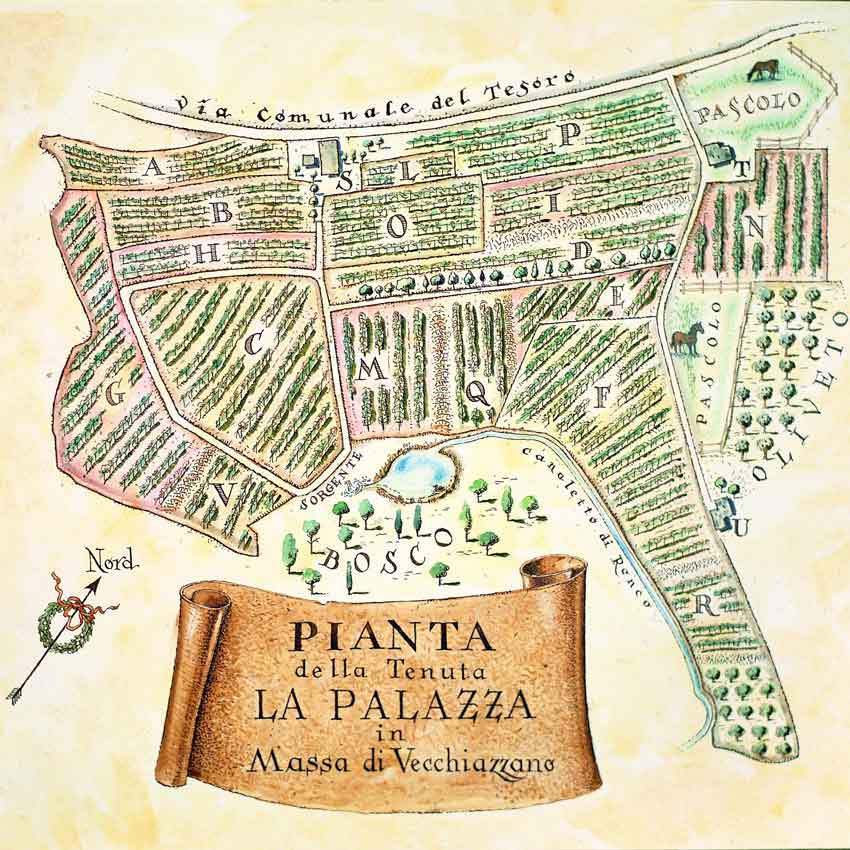TERRITORY
PREDAPPIO
The history of Predappio begins since Roman times, In those years in fact Augustus divided Italy into eleven regions. Predappio was part of the sixth province. It is said that the name comes from the settlement in these localities of an ancient Roman family: the Appi. The locality was thus named Praesidium Domini Appi and shortened to Pre.D.i.Appi. The original Predappio until the early twentieth century was just a small town set in the hills around the medieval castle, fortified by Pino Ordelaffi in 1471.
But in the 1920s–along the valley in the locality of Dovìa–a major construction project was begun on what was to become the New Predappio, where the municipality would be transferred in 1927, also expanding its boundaries and incorporating the territory of the municipality of Fiumana. If today Predappio is a splendid example of a “foundation town” and an open-air museum of rationalist architecture, Predappio Alta remains a delightful medieval village around the old defense fortress. Both are well worth a visit.


SANGIOVESE IN PREDAPPIO
Sangiovese in Predappio has found a special area of choice and has been part of the history, life and economy of the area since time immemorial.
It is enough to mention that already in the municipal statutes of 1383, which regulated civil life and viticulture within the castle. Vine growers of the time were obliged to fence off the vineyard, penalty for violators: five bolognese soldi. As much as ten bolognese soldi amounted to the fine for those who began the harvest before the time set by the college of elders. In addition, the marketing of “foreign wines” was prevented before all the “vino nostrano” had been sold.
Since the 400s then we have evidence of cellars that were intended for wine production, such as the cellars of the Zoli family in Predappio Alta. And as early as 1889 the estate of Count Campi of Villa Raggi was being awarded for the high quality of its sangiovese at the Universal Exhibition in Paris.
Within the Romagna DOC in 2011, after years of work, MGAs were formed to emphasize the specific characteristics of each terroir. In this subdivision, the Predappio MGA takes on an important role, finally giving prominence to the most historic of Romagna’s terroirs.
Daring to say that – in Romagna – Predappio stands to Sangiovese, as Barolo stands to Nebbiolo.
THE SOILS IN PREDAPPIO
The production area of the Doc Predappio is developed along the right and left banks of the Rabbi River, the soils of Pliocene origin with a limestone-clay base, present in the northern part an important sandy presence, as the valley rises, arenaceous intrusions appear while in the center of the Rabbi valley spungone emerges. In contrast, chalky marls and sulfur are found in the Predappio Alta area.
The Predappio subzone has soils of Pliocene origin with a calcareous-clay base in which, however, some different characteristics can be distinguished depending on the area. In the lower part of the subzone a more significant presence of sand is found; in the heart of the Rabbi Valley outcrops Spungone, on the right bank, while chalky marl and sulfur are found on the left bank; in the higher parts of the subzone sandstones are found.
The Pliocene, whose duration is between 6 and 4 million years, is divided into three planes by referring to the marine series of Italian sedimentary deposits: the Tabian, Piacenzian and Astian, corresponding to the Lower, Middle and Upper Pliocene, respectively. The Miocene-Pliocene (Tabianian) boundary is sharply delineated because it is marked by transgressive deposits, consisting of blue marly clays, that overlie regressive Messinian soils; the Tabianian (Lower Pliocene) is followed in stratigraphic continuity by the Piacenzian (Middle Pliocene), to which corresponds the maximum extent of the Pliocene transgression, consisting of powerful deposits of fossil-rich gray-blue marls and clays, which become sandy toward the top of the plateau; above the Piacenzian is the Astian (Upper Pliocene), which closes the sedimentary cycle and consists of regressive yellow sands.


THE CLONES OF PREDAPPIO
Since the cultivation of vines has always been the heritage of the territory of Predappio, there has historically been a nursery activity in the area that has laid those foundations from which the subsequent homologations of many sangiovese clones have sprung.
From Predappio, in fact, come many of the sangiovese clones approved today, which, because of their quality, have also found wide acceptance outside the region itself. We indicate the most important ones:
R24 (1969) which gives wines of medium to long aging, structured, rich in color, with an excellent polyphenolic profile.
VCR19 (1995) which gives perfumed wines, with spicy-phenolic hints, suitable for medium to long aging.
SG12T (1976) which gives wines of deep ruby red color, intensely violet scented, with structure, suitable for aging if its marked tendency to high production is contained
Fedit30 (2000) which gives wines of good color intensity, delicately fruity fragrance, fairly full-bodied and medium acidity
Fedit38 (2000) which gives wines with a deep ruby red color, fruity aroma, good body and good acidity.
VCR23 (1995) which gives wines for long aging, spicy, rich in color;
VCR16 (1996) which gives slightly spicy, structured wines suitable for medium aging.
The latter clones VCR23 and VCR16 are clones specifically from Vecchiazzano, which, however, being an area included within the Predappio DOC appellation, we like to consider for all intents and purposes as clones from Predappio.
